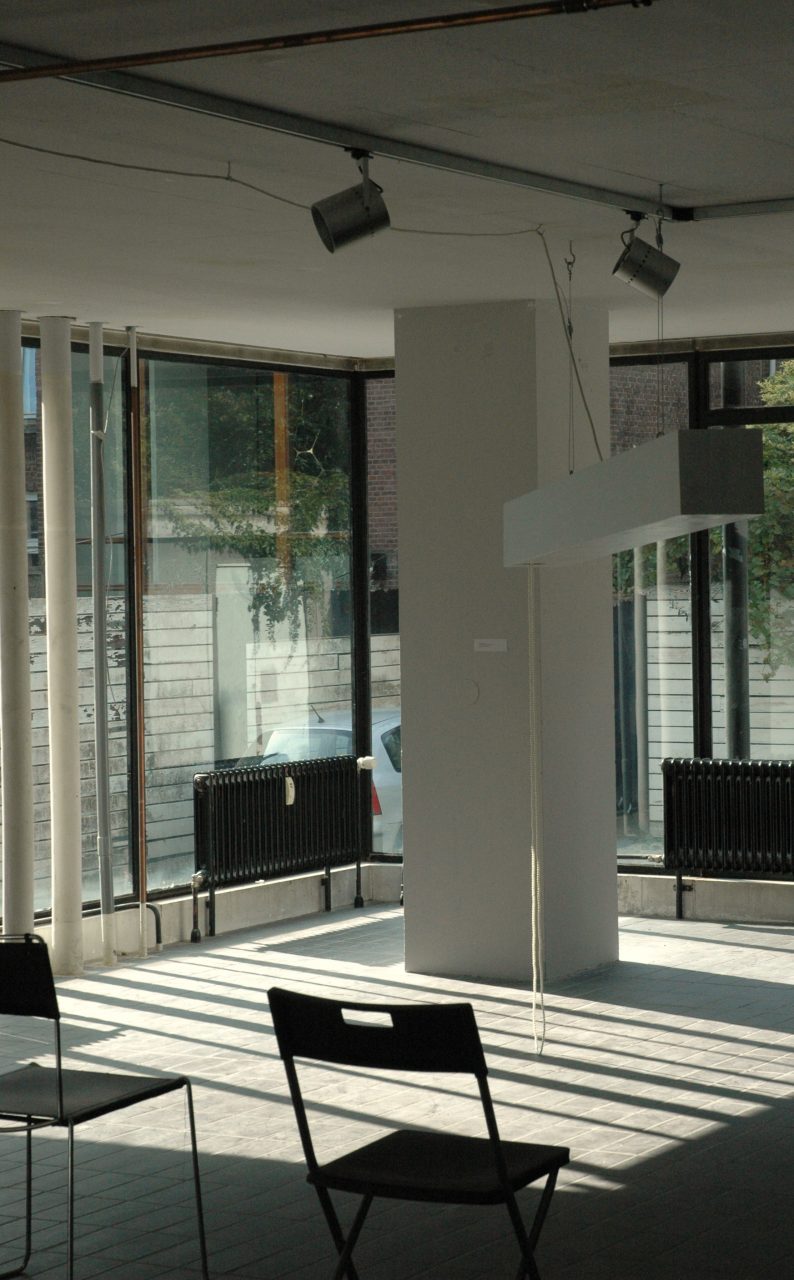On the first floor of creative incubator Het Archief on Robert Fruinstraat, visual artist Herman Lamers curates changing exhibitions. Being an artist is not entirely separable from being a curator: "I think making exhibitions is also a kind of art," says Herman. In both his own work and in creating exhibitions, he searches for the best response to the environment with different materials and works.
A work presented in an exhibition depends on a context created by the curator. "You have to create a space where all the works come into their own," because "bad work presented well, can be very good. But good work, poorly presented, is always bad." Therefore, the right combination of works and balance in color, placement, context, meaning, familiarity or experience of the participating artists must be sought. There is a caveat to this: it should not be too contrived. Making an interesting exhibition means continuing to search without wanting to score: "that you are not actually sure whether it has really worked out."
According to Herman, an exhibition "should be a confrontation and a conflict," so that as a visitor "you start to enjoy it against your will. That you think: it's not my thing but also interesting." To achieve that, for example, he asks artists if they "have any unknown work in the closet." Works that no one expects from them, but that say: this is me too. "That produces exciting things." The conflict arises in the interplay of the combination of artists and works of art.
A concept and context must be created for each exhibition that seeks conflict and confrontation. In doing so, the curator must go beyond finding what is "beautiful" or "good. In order to discover which concept best suits an exhibition, considerable testing is required. "Because of this way of working, I always meet new artists with different styles and concepts," Herman says. "As a result, I always have to look for a new balance and good tone to make it work as a whole." You can't do that by "playing it safe." Not wanting to play it safe means daring to ask questions: what is good work and what is bad work? When does the meaning of a work emerge? About how the visitor answers these questions the curator does not have complete control: "making is accepting that things don't look the way you want them to."
Not only the curator, but also the visitors have to do their best. That means: don't focus, but look. What is happening around the artwork? How does that work against or with the artwork? Herman's message for exhibition-goers: consume less, focus more on the thoughts and starting points of the maker. Mondrian becomes a lot more interesting when you look at his art with Mondrian's perspective. Only "when you start thinking about: if I were a maker, how would I do it?" does it get exciting. "As a consumer, you often keep looking too superficially."
The presentation room of The Archives is open by appointment and every Saturday and Sunday from 1 p.m.-5 p.m. In addition, the presentation room hosts "Café Lamers" every Sunday from 3:00-6:00 p.m., where art meets live music.
